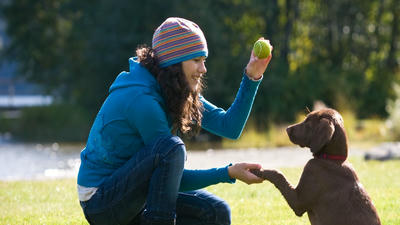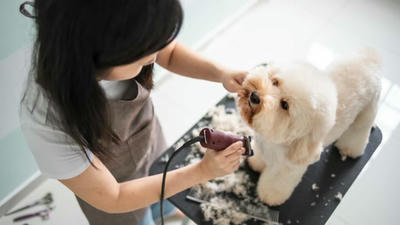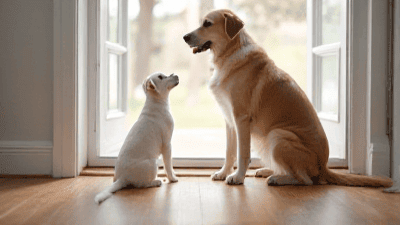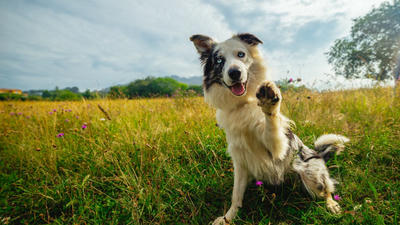
Welcoming a puppy into your home is an exciting adventure filled with joy, laughter, and a few challenges. As a new dog owner, one of the most significant responsibilities you will face is training your puppy. Proper training is essential not only for your puppy's behavior but also for building a strong bond between you and your new furry friend.
Understanding Puppy Development
Before diving into training techniques, it is important to understand the developmental stages of puppies. Dogs go through several key stages in their early lives:
-
Neonatal Stage (0-2 Weeks): During this stage, puppies are completely dependent on their mother and are unable to see or hear.
-
Transitional Stage (2-4 Weeks): Puppies begin to open their eyes and ears and start to explore their environment. This is when they begin to develop social skills.
-
Socialization Stage (4-12 Weeks): This is the most critical period for socialization. Puppies learn to interact with different people, animals, and environments.
-
Juvenile Stage (3-6 Months): Puppies start to test boundaries during this phase. They may exhibit increased energy and stubbornness.
-
Adolescent Stage (6-18 Months): This stage is marked by hormonal changes and can lead to more challenging behaviors. Consistent training is vital during this time.
Understanding these stages can help you tailor your training approach based on your puppy's needs and behaviors.
The Importance of Socialization
Socialization is one of the most critical aspects of puppy training. Proper socialization helps prevent behavioral issues later on. Here are some key points to consider:
-
Expose to Various Environments: Introduce your puppy to new places, sounds, and smells. Take walks in different neighborhoods, visit pet-friendly stores, and use car rides as opportunities for exposure.
-
Meet New People and Animals: Allow your puppy to interact with various people, including children and adults, as well as other pets. This helps them learn appropriate behavior in diverse social situations.
-
Positive Experiences: Ensure that these social experiences are positive. Use treats and praise to create a positive association with new experiences, preventing fear or anxiety.
-
Puppy Classes: Consider enrolling your puppy in a well-structured puppy kindergarten class. These classes provide valuable socialization opportunities in a controlled environment.
Basic Training Commands
Training your puppy should begin with a few essential commands. These commands form the foundation for good behavior and help establish communication between you and your dog.
1. Sit
Teaching your puppy to sit is one of the simplest commands and serves as a great starting point. Here’s how to do it:
- Get your puppy’s attention by holding a treat close to their nose.
- Raise the treat slowly over their head. As they follow the treat, their bottom should naturally lower to the ground.
- As soon as they sit, praise them and give the treat.
- Repeat until they consistently sit on command.
2. Stay
The "stay" command is essential for keeping your puppy safe. To teach this command:
- Start with your puppy sitting. Show them a treat and then slowly move it away.
- Say "stay" in a firm but gentle voice.
- Take a few steps back. If they stay put, return to them and reward with praise and a treat.
- Gradually increase the distance and duration.
3. Come
The "come" command is crucial for recall, helping you keep your puppy safe. Follow these steps:
- Start indoors or in a secure area. Call your puppy’s name followed by "come."
- Use an excited tone and encourage them to come to you.
- When they reach you, reward them with treats and affection.
- Practice this in a safe, enclosed area before trying it in more open spaces.
4. Down
The "down" command can help calm your puppy and reduce unwanted jumping behavior:
- Start from a sitting position. Hold a treat close to their nose.
- Lower the treat to the ground. As your puppy follows it down, their body should lower as well.
- Reward them once they are lying flat on the ground.
5. Leave It
Teaching your puppy to "leave it" can help prevent dangerous or destructive situations:
- Show your puppy a treat in one hand and a less desirable item in the other.
- Say "leave it" as you close your hand around the treat.
- When your puppy looks away, reward them with the treat from your other hand.
Positive Reinforcement
Positive reinforcement is the most effective training method for puppies. This technique involves rewarding good behavior rather than punishing bad behavior. Here’s how it works:
-
Timing is Key: Reward your puppy immediately after they perform the desired behavior. This helps them make the connection between the action and the reward.
-
Types of Rewards: Use treats, praise, toys, or playtime as rewards. Find what motivates your puppy the most, and use it to reinforce training.
-
Be Consistent: Consistency is critical in training. Use the same commands and rewards for specific behaviors to avoid confusing your puppy.
-
Avoid Punishment: Focus on redirecting unwanted behaviors rather than punishing your puppy. For example, if your puppy chews on furniture, provide an appropriate chew toy instead.

Establishing a Routine
Puppies thrive on routine. Establishing a consistent daily schedule can help your puppy feel secure and understand expectations. Here are some key components to include in your routine:
1. Feeding Times
Feed your puppy at the same times each day. This helps regulate their digestion and sets up a sense of stability.
2. Bathroom Breaks
Take your puppy outside frequently to prevent accidents indoors. Puppies need to potty after eating, drinking, or waking from a nap.
3. Exercise and Playtime
Set aside regular times for walks, play, and training sessions. Physical and mental exercise is essential for a puppy’s development and helps prevent boredom-related problems.
4. Sleep Schedule
Puppies need plenty of sleep to grow and learn. Create a cozy, quiet space for them to rest and ensure they receive ample nap times throughout the day.
Dealing with Common Puppy Behaviors
As you train your puppy, you may encounter common behavior challenges. Understanding how to address these issues will allow you to respond effectively.
1. Biting and Nipping
Puppies explore the world using their mouths, which can lead to nipping behavior. Here’s how to handle it:
- Redirect the Behavior: If your puppy bites, replace your hand or clothing with a toy they can chew on.
- Use a Firm Voice: If the biting continues, let out a yelp to mimic how another puppy would react to rough play. This can help discourage the behavior.
- Provide Plenty of Chew Toys: Ensure your puppy has appropriate items to chew on, helping them satisfy their natural urge.
2. Jumping on People
Puppies often jump excitedly to greet people. To modify this behavior:
- Ignore the Jumping: When your puppy jumps, turn away and give them no attention. Refrain from saying anything or pushing them away.
- Reward Calm Behavior: When they stop jumping and remain calm, reward them with attention and treats.
3. Chewing
Chewing is a natural behavior for puppies, but it can lead to destructive habits. To manage chewing:
- Provide Alternatives: Give your puppy a variety of designated chew toys to satisfy their urge to chew.
- Supervise and Redirect: Keep an eye on your puppy and redirect them to their toys when they start chewing on inappropriate items.
4. Barking
Barking is another common behavior that can signal excitement, fear, or the need for attention. To address excessive barking:
- Identify Triggers: Try to determine what’s causing your puppy to bark and address the underlying issue.
- Teach the "Quiet" Command: Reward your puppy for being quiet when the situation arises, using treats and praise.
Consistency and Patience
Training a puppy takes time, patience, and consistency. Celebrate small victories and be prepared for setbacks. It's essential to keep training sessions short and fun, as puppies have limited attention spans.
1. Short Training Sessions
Limit training sessions to about 5 to 10 minutes several times a day. This will keep your puppy engaged and focused.
2. Gradual Progression
Start with basic commands and gradually introduce more complex commands and tricks as your puppy masters the basics.
3. End on a Positive Note
Always aim to end training sessions on a positive note. Leave your puppy with a successful command or fun playtime, reinforcing a positive training experience.
Seeking Professional Help
If you encounter challenges that you cannot resolve on your own, seeking professional help is a smart option. Consider the following:
-
Puppy Classes: Puppy training classes offer a structured environment for socialization and training. Professional trainers can provide personalized guidance.
-
Behaviorists: If your puppy exhibits severe behavioral issues, consult a certified animal behaviorist for expert advice.
Conclusion
Training a puppy is an essential and rewarding part of being a dog owner. By understanding your puppy's developmental stages, practicing positive reinforcement, and remaining consistent in your approach, you can raise a well-mannered dog that is a joy to have around. Always remember that patience and love are the keys to successful training. Your bond with your puppy will grow as you navigate this journey together.



